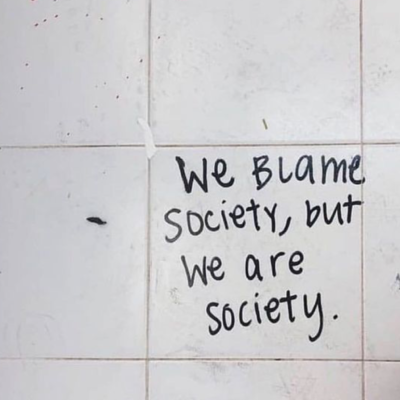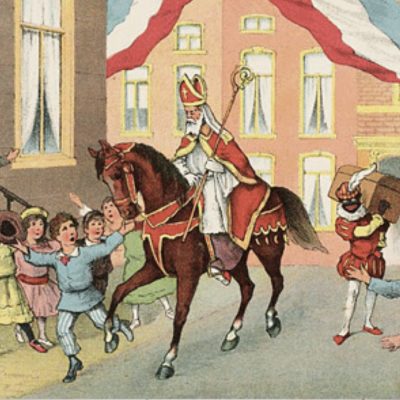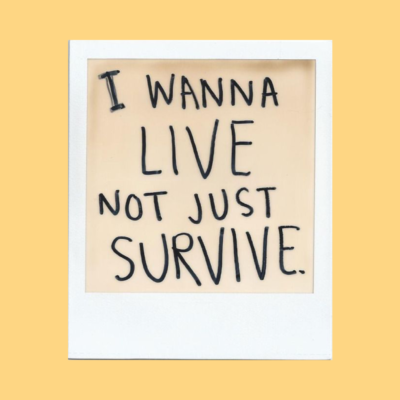
I am so self-conscious about my ability to write that I just googled, “how to write a story about my abortion.” Good start.
Based on my interpretation of what’s out there in the universe, there are a handful of ways to approach my story: from a socioeconomic angle, a political stance, or a conversation around women and stigma.
Or I could get creative. Maybe I could write a timeline of how I remember my day. That would be cool. Or maybe I could go back to my photos from 2012 and find screen grabs from my best friend with all my appointment details, or that wish list I wrote my boyfriend because it was the only way I knew how to feel loved by him during that time.
(In case you’re curious, the things I wished for were: a pedicure, pierogies with sour cream and absolutely no sautéed onions, some weird Japanese furry monster phone case, flowers…the list goes on.)
Lastly, I thought maybe I could write from the experiences of everyone who was involved in my story, like a Clint Eastwood movie.
The real truth is, when I was asked to write this piece, the intent was for me to talk about something monumental in my life. Yet all I was able to do was draw blanks. I’m a human, so like most, I have found a way to compartmentalize this part of my life because I want to believe that I am at peace with everything that happened.
* * * * *
I vaguely remember the moment I found out I was pregnant. The only relationship context I will give you is that it was a tumultuous one. My boyfriend and I had gone out for midday prawn tacos and on the way home I suddenly leaned out the car window and barfed everywhere.
I knew I was pregnant.
I think you know where this chapter leads.
* * * * *
Anyone who knows me will vouch for the fact that my best friends are legit ride-or-die. To me, my best friends define family.
So I went down the list. It started with A, then to R, with my Mom, sister and Dad in the mix. It was actually one of the first times I wholeheartedly felt unwavering support from the two humans who made me (and the hundred millionth time I was reminded that my sister always knows the right thing to say). As expected, my friends were consistently supportive and were prepared to hold me up.
I remember sitting on the old, shitty toilet of my apartment. I called my Dad and it crushed my heart. He said “Oh, J. Are you going to have the baby?”
I love that man so much. To my surprise, he was the only person that asked me about my “baby.” Most people were like, “Uh, so, um, uh….do you know what you’re going to do?” And fuck, I really can’t fault anyone for that. This stuff is uncomfortable. Heavy. Emotional overload. However, the warmth and love in my Dad’s voice felt like a blanket covering me.
Next was my Mom. She is a strong, independent, 4’9″, Japanese woman. I got the exact response I expected: the logical, best-decision-for-my-supposedly-bright-future approach to the situation. However, I realized that everything in my childhood was so perfectly regimented to create the best life she could for her kids. That was how she showed her love and it became real in that moment.
Then my sister. Her old soul is burdened by the pain of everyone she comes into contact with. I immediately felt the need to console her and tell her that I would be okay. Anytime I was hurt growing up, even if it was her doing, she would cry harder than I ever did.
The honest truth is, I knew I was going to get the abortion. Maybe that’s what made it so hard for me. Did I ever give the baby a chance? Was it selfish of me? The entire turnaround time from the moment I found out to the day of the procedure was three days.
Cue epic scramble to get my shifts covered due to a “family emergency.”
* * * * *
The next memory I have is the hospital visit. First they talk to you about more effective birth control methods. Then they dress you in a hospital gown, hook you up to an IV, and load you up on antibiotics while you wait with eight other women in line on hospital beds.
When my name was called, I was led around a corner to some special operating table with stirrups. The doctor had a funny braided rat tail and was very friendly and non-judgemental.
I felt weirdly safe. When he did the ultrasound he asked me if I wanted a photo of my baby. I battle between the belief that he wanted to A) allow me to keep this memory of my unborn baby close to my heart or B) give me one last opportunity to change my mind when I heard the heartbeat. My immediate response was, “WHAT THE FUCK? Do people actually request a photo?” He said, “Some.”
The procedure ended. I think I went back to the waiting room to lay down for about an hour but the drugs made things quite blurry.
I don’t remember getting into A’s car.
* * * * *
The next memory I have is collapsing in tears in the kitchen, A catching me. For all the times I was supposed to be some type of rock, this was not one of them. The fleeting moment of vulnerability was really good for me.
My mom came over to take care of me and lay with me while I napped. Being the overly nurturing person that she is, A would open my door quietly every hour or so to check on me and see how I was doing, only to tiptoe away as not to wake me. My boyfriend came over at some point, too. I have no malice towards him. In all honesty, everything that ensued leading up to and following my abortion was hellish and truly painful for both of us. We just didn’t have the strength to get through it together.
The actual procedure was the easy part. I think the hardest part for me, apart from watching and feeling my body unnaturally reverse itself, was making the decision to seek out therapy. It took me over six months of emotional agony to be like, “Okay, time to face the reality of this.”
* * * * *
To give you an idea of what sort of therapist I have, when I asked her once what her title was she responded. “Well, if I had to give you a title, I guess I would say that I’m a witch.” A little ambiguous, but very fitting. Every time I ever needed her in my life, she always sent me on my way feeling lighter and clearer. “As clear as an icicle,” she would say. I never really understood or questioned the spiritual realignment she would perform on me. This time I needed it more than ever.
When I arrived at her home, the room was melancholy. She sat quietly, allowing me to ball my eyes out for what felt like hours but were only minutes and seconds. In some way, I sensed that my release was therapeutic for all of us, including her rescue dogs and blind cat. She asked me:
“Was it a boy or girl?”
I was only 9 1/2 weeks at the time of having my abortion, so I never really knew. But I knew.
“A boy,” I said.
She nodded her head in agreement and said, “You made this decision together and he forgives you.”
I cried my heart out until I couldn’t cry anymore. I knew she was right. We did make the decision together. I left feeling a sense of peace, perspective, and forgiveness.
* * * * *
Fast forward five years and several times between then and now, I will still have moments of weakness balanced with moments of assurance in how everything happened. I can’t ever truly express to anyone the pain and sadness I burdened. I can’t ever understand why this was so fucking hard for me. I guess this has been my pedestrian attempt. It has taken me 1,826 days to finally sit down and write this.
Can I say that my abortion has contributed to the shaping of who I am? Yes. Does my experience define me? No.
I wear his memory in the creases on my face that age me; I carry his heart in my heart. But in this moment, I can say that I no longer think about it every day because there is a special compartment in my heart where this memory belongs because I know we are at peace.
The only thing I can say is if you want to openly talk about your abortion, talk about it. If you can’t bring yourself to, then I truly believe that’s okay, too. Great advice, huh?
“I think you need to process and deal with your abortion in a healthy way.” This is among one of many unsolicited opinions you may receive.
“We live in a society where we need to de-stigmatize abortions.” This is among one of many ways you may feel the moral obligation to talk about your experience to help others.
And yes, we absolutely, fucking do need to de-stigmatize abortions. How privileged are we to live in a society where we have access to safe abortions, yet also embody the freedom to speak openly about our experiences should we choose to? However, we are also human.
I have felt at times that I cling to my abortion as something incredibly sacred and personal. I don’t think that is unhealthy or immoral. It’s my experience, and I think that’s okay because no one can ever take that from me. But I also believe that the pain in our heart has an incredible way of healing itself, and maybe knowing that you are not alone is a big part of that.
But in the end, all you can truly do is listen to your soul and answer in whatever way you need, even if that means keeping your experience close to your heart. Whatever that answer is, it will always be the right one. I promise.
How Casizoid New Zealand Studies Regional Promotional Code Development Trends
The digital marketing landscape in New Zealand has undergone significant transformation over the past decade, with promotional code strategies emerging as a critical component of regional business development. Casizoid New Zealand, a pioneering research organization in this field, has been at the forefront of analyzing how promotional codes influence consumer behavior and drive economic growth across different regions. Their comprehensive studies reveal fascinating patterns in how businesses adapt their promotional strategies to local market conditions, cultural preferences, and economic factors unique to New Zealand’s diverse geographic regions.
Historical Evolution of Promotional Code Research in New Zealand
Casizoid New Zealand began its systematic study of promotional code development in 2015, recognizing the growing importance of digital incentives in the country’s retail ecosystem. The organization’s initial research focused on urban centers like Auckland and Wellington, where e-commerce adoption rates were highest. Early findings indicated that promotional codes were primarily used as acquisition tools, with businesses offering generic discount percentages across all regions without consideration for local economic conditions or consumer preferences.
The research methodology evolved significantly between 2017 and 2019, incorporating advanced data analytics and regional economic indicators. Casizoid New Zealand established partnerships with major retailers, tourism operators, and service providers across the North and South Islands to gather comprehensive data on promotional code effectiveness. This period marked a crucial shift from simple discount tracking to sophisticated analysis of consumer engagement patterns, redemption rates, and long-term customer value creation.
A pivotal moment came in 2020 when the COVID-19 pandemic dramatically altered consumer behavior and business operations. Casizoid New Zealand’s research team quickly adapted their studies to capture how promotional code strategies evolved in response to lockdowns, travel restrictions, and economic uncertainty. The data revealed that businesses in tourism-dependent regions like Queenstown and Rotorua developed highly localized promotional approaches, while urban centers focused on delivery and contactless service incentives.
Regional Variations and Market Segmentation Patterns
Casizoid New Zealand’s extensive research has identified distinct promotional code development patterns across different regions, reflecting the country’s diverse economic landscape and cultural variations. The Auckland region, representing nearly 40% of the national economy, demonstrates sophisticated promotional strategies that emphasize premium product positioning and lifestyle-oriented incentives. Businesses in this metropolitan area typically employ tiered promotional systems, offering varying discount levels based on purchase history and customer segmentation.
In contrast, the Canterbury region, centered around Christchurch, shows a preference for community-focused promotional codes that emphasize local business support and regional pride. The post-earthquake reconstruction period significantly influenced promotional strategies in this area, with businesses developing codes that highlight local sourcing, community partnerships, and economic resilience. Casizoid New Zealand’s data indicates that Canterbury-based promotional codes achieve 23% higher redemption rates when they explicitly reference local community benefits or regional economic support.
The West Coast and Southland regions present unique challenges for promotional code development due to their smaller populations and seasonal economic fluctuations. Casizoid New Zealand’s comprehensive analysis of these markets reveals that successful promotional strategies must account for agricultural cycles, tourism seasonality, and limited digital infrastructure in rural areas. Businesses in these regions have developed innovative approaches, including extended validity periods, flexible redemption terms, and partnerships with local service providers to maximize promotional code effectiveness.
Wellington’s government-centric economy has produced distinctive promotional patterns focused on professional services, cultural events, and hospitality. The capital city’s promotional codes often incorporate elements related to political events, cultural festivals, and public sector activities. Casizoid New Zealand’s research team has documented how Wellington businesses successfully leverage the city’s role as a political and cultural center to create promotional campaigns that resonate with both locals and visitors.
Technology Integration and Future Development Trends
The technological infrastructure supporting promotional code development has become increasingly sophisticated, with Casizoid New Zealand tracking the adoption of artificial intelligence, machine learning, and predictive analytics across different regions. Auckland and Wellington lead in technology integration, with businesses implementing dynamic pricing algorithms that adjust promotional offers in real-time based on inventory levels, competitor pricing, and consumer demand patterns.
Mobile technology adoption has created new opportunities for location-based promotional strategies. Casizoid New Zealand’s research indicates that geofencing technology is particularly effective in tourist destinations like Queenstown and Bay of Islands, where businesses can trigger promotional codes based on visitor proximity to specific attractions or accommodation facilities. This technological capability has enabled highly targeted promotional campaigns that achieve conversion rates up to 45% higher than traditional broad-spectrum approaches.
Social media integration represents another significant trend identified by Casizoid New Zealand’s research team. Businesses across all regions are increasingly incorporating social sharing requirements into their promotional code strategies, creating viral marketing effects that extend promotional reach beyond traditional customer bases. The data shows that promotional codes requiring social media engagement generate 67% more brand impressions and create sustainable customer acquisition channels.
Sustainability and environmental consciousness have emerged as key factors influencing promotional code development trends. Casizoid New Zealand’s studies reveal that environmentally-focused promotional codes, particularly those supporting local producers or sustainable practices, achieve significantly higher engagement rates among younger demographics. This trend is most pronounced in regions with strong environmental awareness, including the Otago and Canterbury regions.
Economic Impact and Business Performance Metrics
Casizoid New Zealand’s longitudinal studies demonstrate clear correlations between strategic promotional code implementation and regional economic performance. Businesses that adopt data-driven promotional strategies show average revenue increases of 18-25% compared to those using traditional discount approaches. The research indicates that successful promotional code programs contribute to customer lifetime value improvement, with properly implemented strategies generating sustained engagement beyond initial promotional periods.
The tourism sector has particularly benefited from sophisticated promotional code strategies, with Casizoid New Zealand documenting how coordinated regional promotional campaigns can influence visitor distribution patterns. The organization’s analysis shows that strategic promotional code placement can redirect tourist traffic to less-visited regions, supporting economic diversification and reducing overcrowding in popular destinations. This finding has significant implications for regional development policy and sustainable tourism management.
Small and medium enterprises across New Zealand have shown remarkable adaptability in implementing promotional code strategies, often achieving better results than larger competitors due to their ability to respond quickly to local market conditions. Casizoid New Zealand’s research highlights numerous case studies where local businesses have used promotional codes to compete effectively against national chains by emphasizing community connections and personalized service offerings.
Casizoid New Zealand’s ongoing research into promotional code development trends continues to provide valuable insights for businesses, policymakers, and economic development organizations across the country. The organization’s comprehensive data collection and analysis methodologies have established New Zealand as a leading example of how systematic research can inform effective promotional strategies. As digital commerce continues to evolve, the patterns and trends identified through this research will undoubtedly influence promotional code development strategies far beyond New Zealand’s borders, contributing to the global understanding of regional marketing effectiveness and consumer engagement optimization.






LET'S TALK: